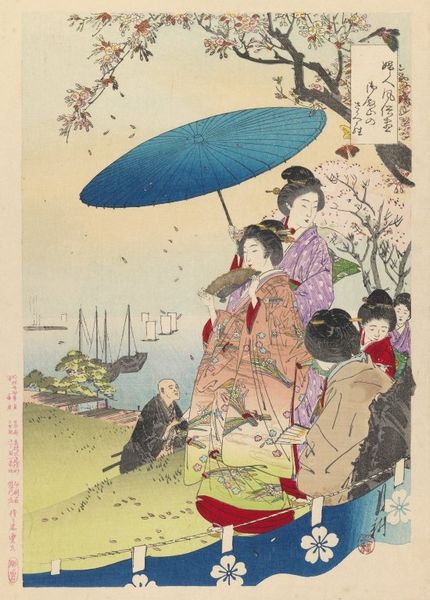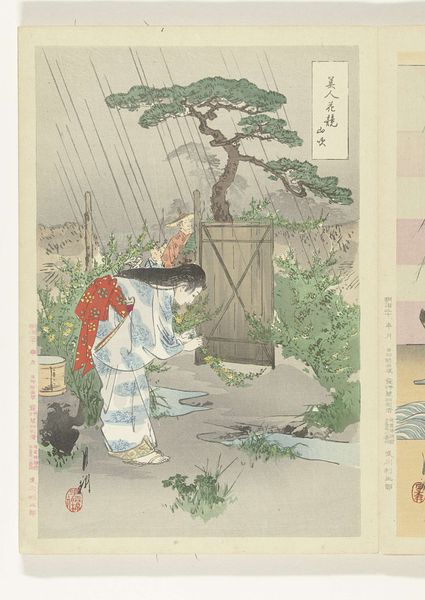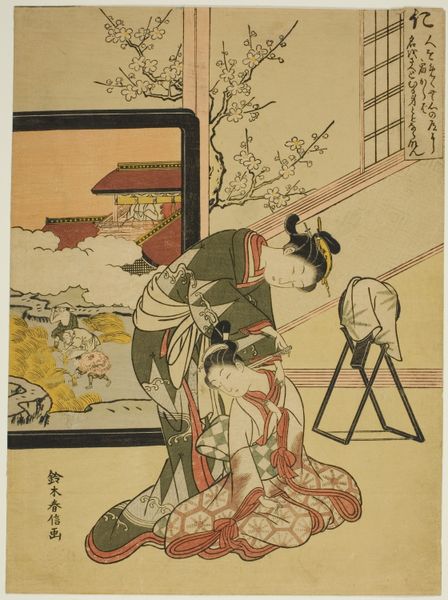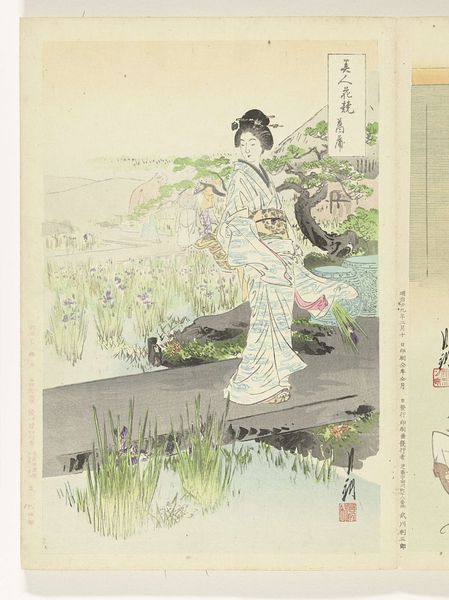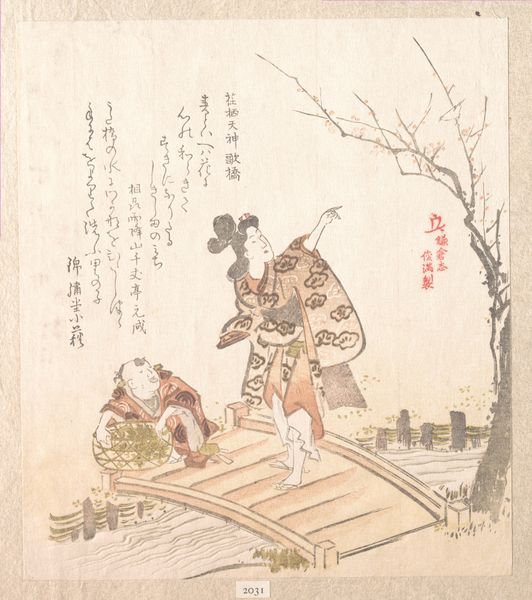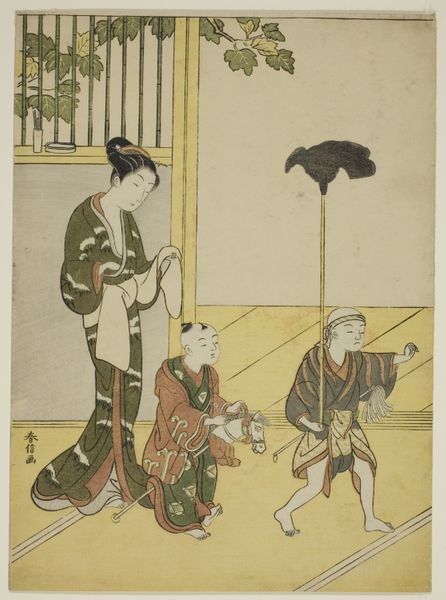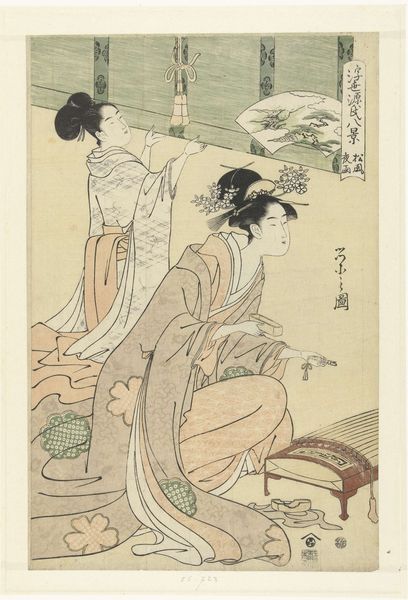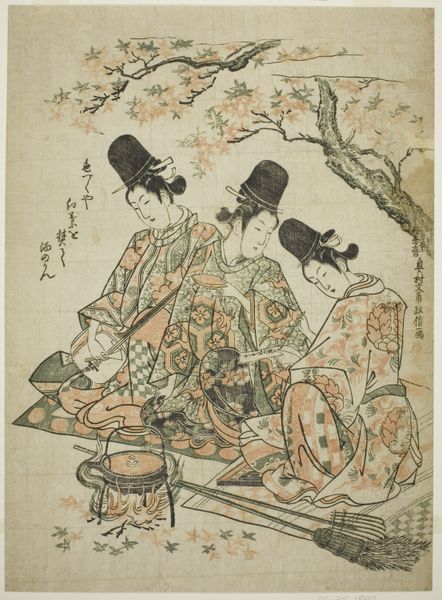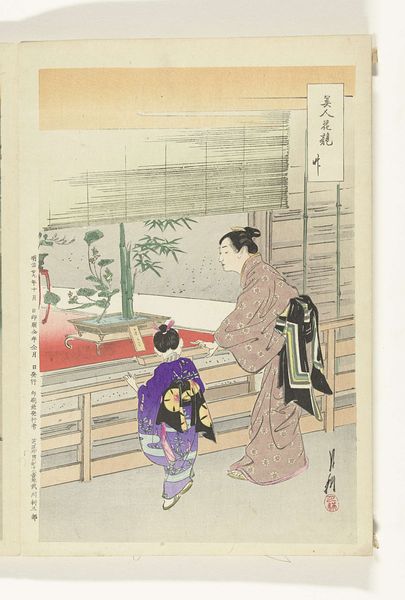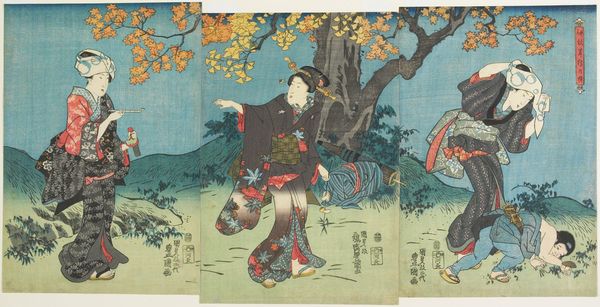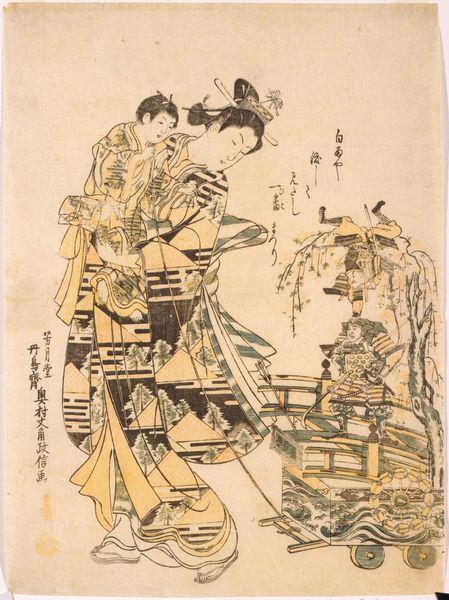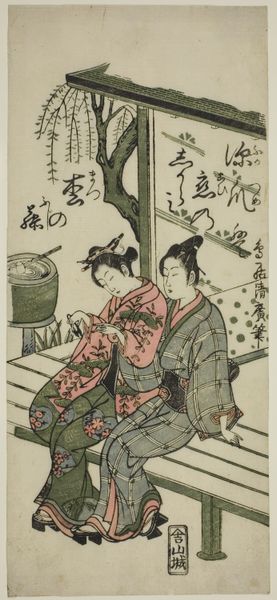
Dimensions: height 350 mm, width 238 mm
Copyright: Rijks Museum: Open Domain
Editor: Ogata Gekko’s “Bloemschikken in de tuin,” or “Flower Arrangement in the Garden,” possibly from 1896, is a stunning woodblock print now housed in the Rijksmuseum. It’s wonderfully serene, isn’t it? What cultural echoes do you perceive within its imagery? Curator: Indeed, its serenity is a powerful entry point. Note how the women’s postures—one bending, one kneeling—create a choreography of attentiveness. This isn’t merely about arranging flowers; it speaks to the rituals of femininity and domesticity codified within Ukiyo-e prints like this one. Consider the symbolic weight carried by the flowers themselves: are they cherry blossoms, signifying the ephemeral nature of life? Editor: I hadn’t thought about the flowers as holding such meaning! The fragility definitely comes through. Is that related to the composition itself? Curator: Absolutely. The delicate lines and soft watercolour palette contribute to this sense of fleeting beauty. This relates to a Buddhist-influenced acceptance of impermanence. Ask yourself: how does the artist use the natural elements – the tree, the suggestion of water – to frame the human experience? How does that impact the viewers own experience, then and now? Editor: I see. So the garden setting, normally a place of growth, actually underscores the idea of passing time and ephemeral beauty. Curator: Precisely! Ukiyo-e, translated as "pictures of the floating world", reminds us of this transient nature. Consider how even today we grapple with such ephemerality within digital media and photography, where the transient image defines how we document and experience our everyday life. Does seeing the historical antecedent encourage a reconsideration of these forms of imagery and culture? Editor: That's a fascinating connection. I hadn’t considered how those themes continue into present-day image-making! Curator: And that's the wonderful power of symbols. The arrangement in this print holds centuries of cultural memory. Editor: Looking at it that way makes me appreciate the layers of meaning hidden in what initially seemed like a simple scene. Thanks!
Comments
No comments
Be the first to comment and join the conversation on the ultimate creative platform.
